This website has been archived from TrainWeb.org/girr to TrainWeb.US/girr.
This website has been archived from TrainWeb.org/girr to TrainWeb.US/girr.
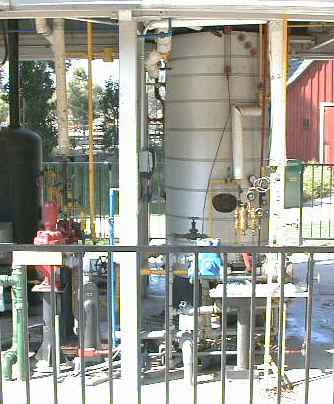 The
display of stationary steam engines is run from a large common
vertical boiler. There might be as many as a dozen engines, large
and small, running at the same time.
The
display of stationary steam engines is run from a large common
vertical boiler. There might be as many as a dozen engines, large
and small, running at the same time.
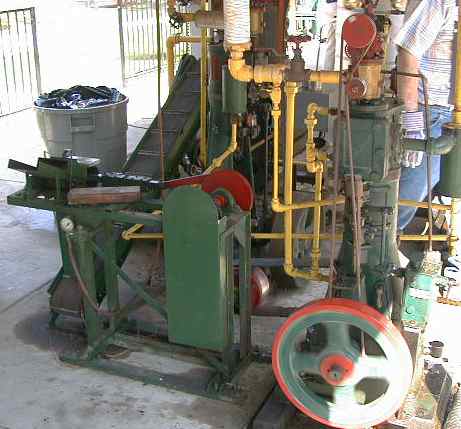 One of the larger engines
runs a can crusher and another nearby operates a conveyer to drop
the crushed cans into a recycling bin. If these engines are going
to run for the amusement of the public (and the operators), then
they might as well do something useful.
One of the larger engines
runs a can crusher and another nearby operates a conveyer to drop
the crushed cans into a recycling bin. If these engines are going
to run for the amusement of the public (and the operators), then
they might as well do something useful.
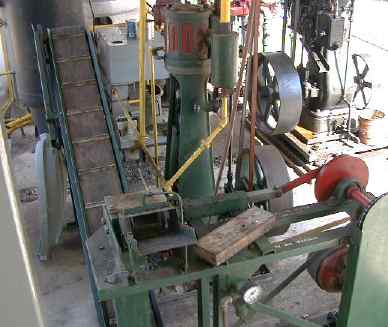 Cans are fed into the
input hopper by hand and then automatically fed into the crusher
chamber. The can is then ejected and falls on the conveyor.
Cans are fed into the
input hopper by hand and then automatically fed into the crusher
chamber. The can is then ejected and falls on the conveyor.
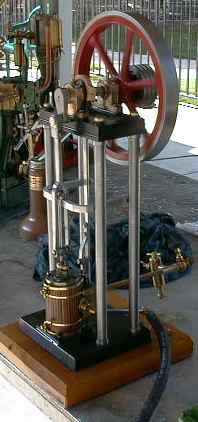 This is a model
of the earliest type of vertical steam engines, first patented in
1797. They were typically used in collieries for any sort of power
that was needed.
This is a model
of the earliest type of vertical steam engines, first patented in
1797. They were typically used in collieries for any sort of power
that was needed.
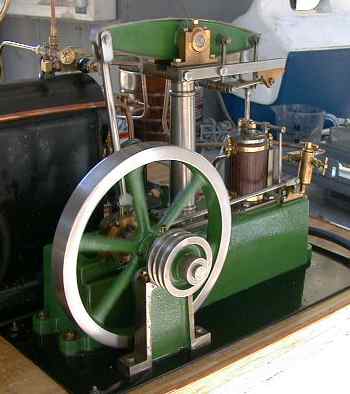 This is a
model of a walking beam engine, first implemented by James Watt.
The walking beam parallel motion approach allowed for straight line
motion of the piston rod. These engines were first used in the very
early 19th century.
This is a
model of a walking beam engine, first implemented by James Watt.
The walking beam parallel motion approach allowed for straight line
motion of the piston rod. These engines were first used in the very
early 19th century.
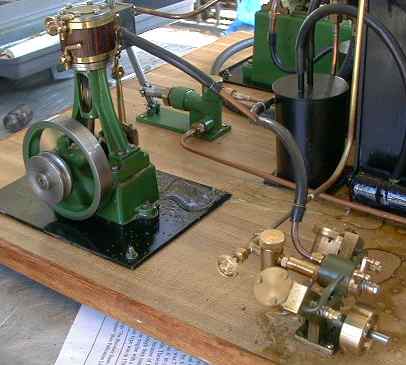 These two smaller samples are models of engines originally designed
for marine use in the 19th and 20th centuries. The vertical engine
was also often used to power small factories or electrical
generators. The V-twin is an oscillating cylinder type often used
in paddle steamers. This particular model is intended for use in
live steam model boats.
These two smaller samples are models of engines originally designed
for marine use in the 19th and 20th centuries. The vertical engine
was also often used to power small factories or electrical
generators. The V-twin is an oscillating cylinder type often used
in paddle steamers. This particular model is intended for use in
live steam model boats.
These engines and several of the others are mounted with their own boiler, but this day, they were running off steam supplied by the main steam plant.
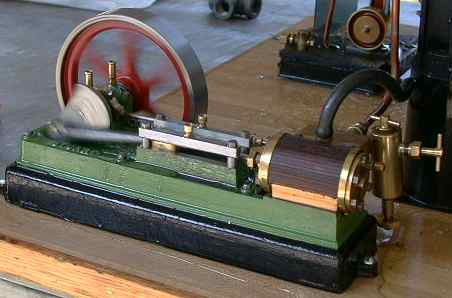 This is a
model of a horizontal steam engine that was used to power small
factories throughout the 19th and 20th centuries. This model was
running really fast as the camera could not stop the motion of the
flywheel.
This is a
model of a horizontal steam engine that was used to power small
factories throughout the 19th and 20th centuries. This model was
running really fast as the camera could not stop the motion of the
flywheel.
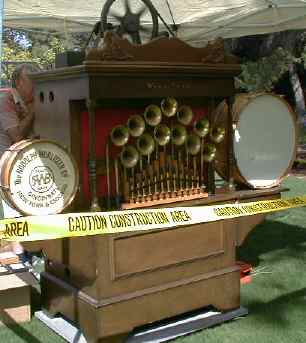 For the 1999
Fall Meet, this 1921 vintage Model 125 Wurlitzer Military Band
Organ was brought for display. It was playing most of the time.
For the 1999
Fall Meet, this 1921 vintage Model 125 Wurlitzer Military Band
Organ was brought for display. It was playing most of the time.
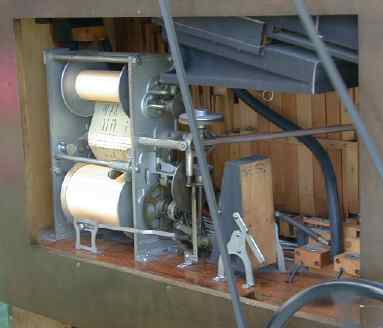 The Band Organ runs like a player piano with a paper roll that
controls what it plays. When a slot in the paper tape runs past a
manifold of holes and exposes one, air is let in an operates a
valve which then lets pumped air blow a horn or operate one of the
percussion instruments.
The Band Organ runs like a player piano with a paper roll that
controls what it plays. When a slot in the paper tape runs past a
manifold of holes and exposes one, air is let in an operates a
valve which then lets pumped air blow a horn or operate one of the
percussion instruments.
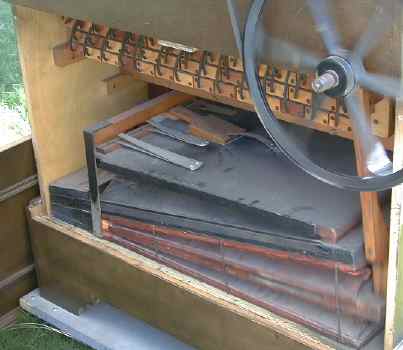 Air is supplied by a pump and
storage chamber arrangement. The lower bellows pump pressurized the
upper storage chamber which in turn expands or contract depending
on the demand for air. If the chamber fills completely, a "pop off"
valve opens (the wooden feature that looks like a paint brush) and
exhausts the excess air.
Air is supplied by a pump and
storage chamber arrangement. The lower bellows pump pressurized the
upper storage chamber which in turn expands or contract depending
on the demand for air. If the chamber fills completely, a "pop off"
valve opens (the wooden feature that looks like a paint brush) and
exhausts the excess air.
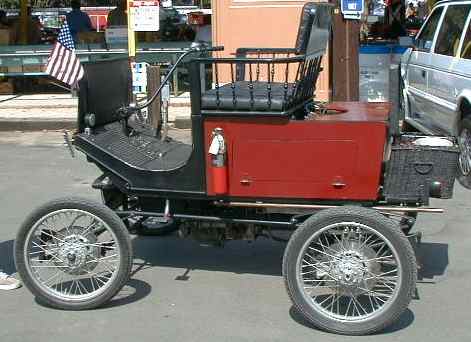 This 1901 Locomobile was not exactly static.
Actually it was running all round the place and even out onto Zoo
Drive (the car is street legal). It is not completely stock as it
has disc brakes on all four wheels and the necessary lighting to
make it legal.
This 1901 Locomobile was not exactly static.
Actually it was running all round the place and even out onto Zoo
Drive (the car is street legal). It is not completely stock as it
has disc brakes on all four wheels and the necessary lighting to
make it legal.
© 1999-2000 George Schreyer
Created Oct 2, 1999
Last Updated Dec 31, 2000